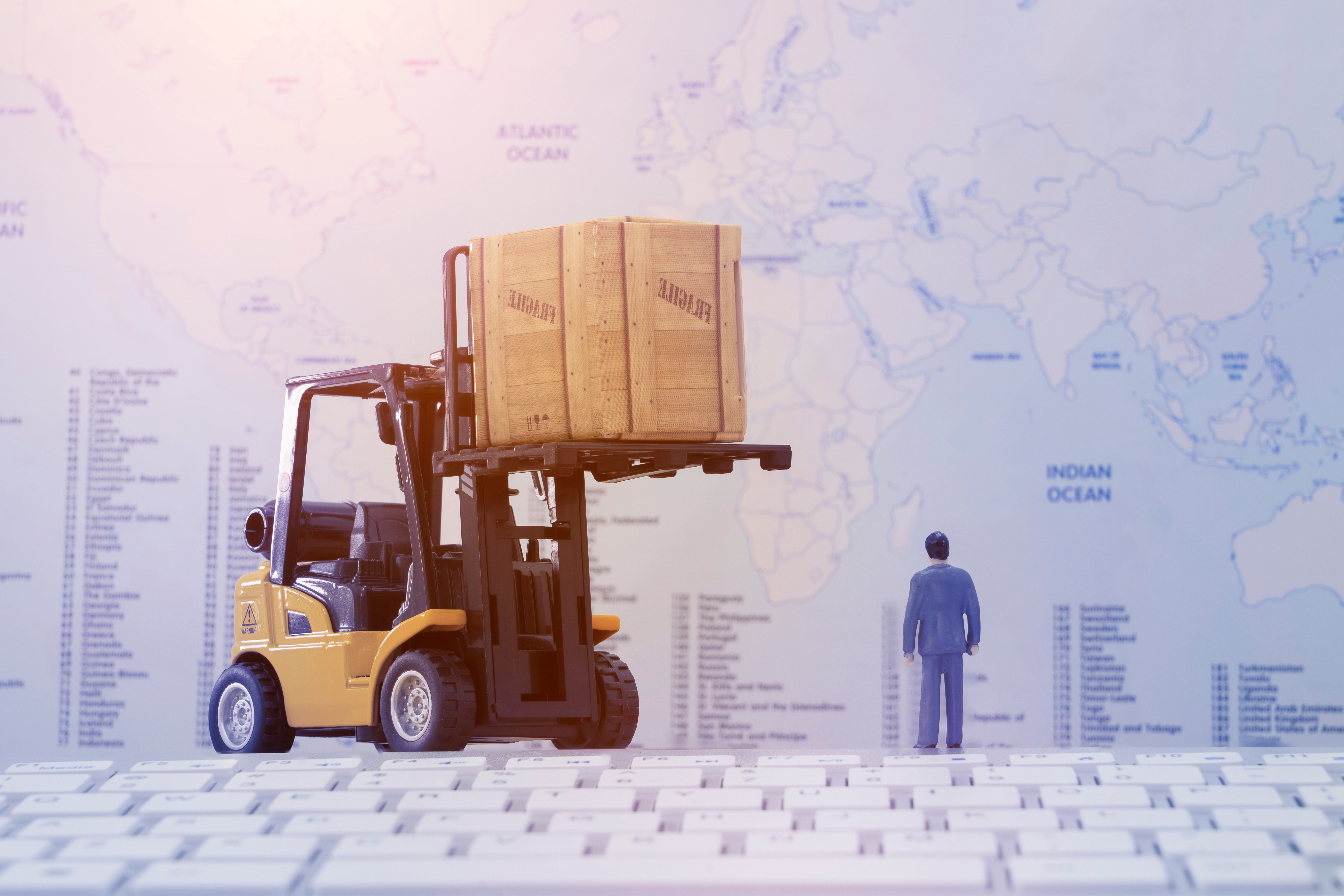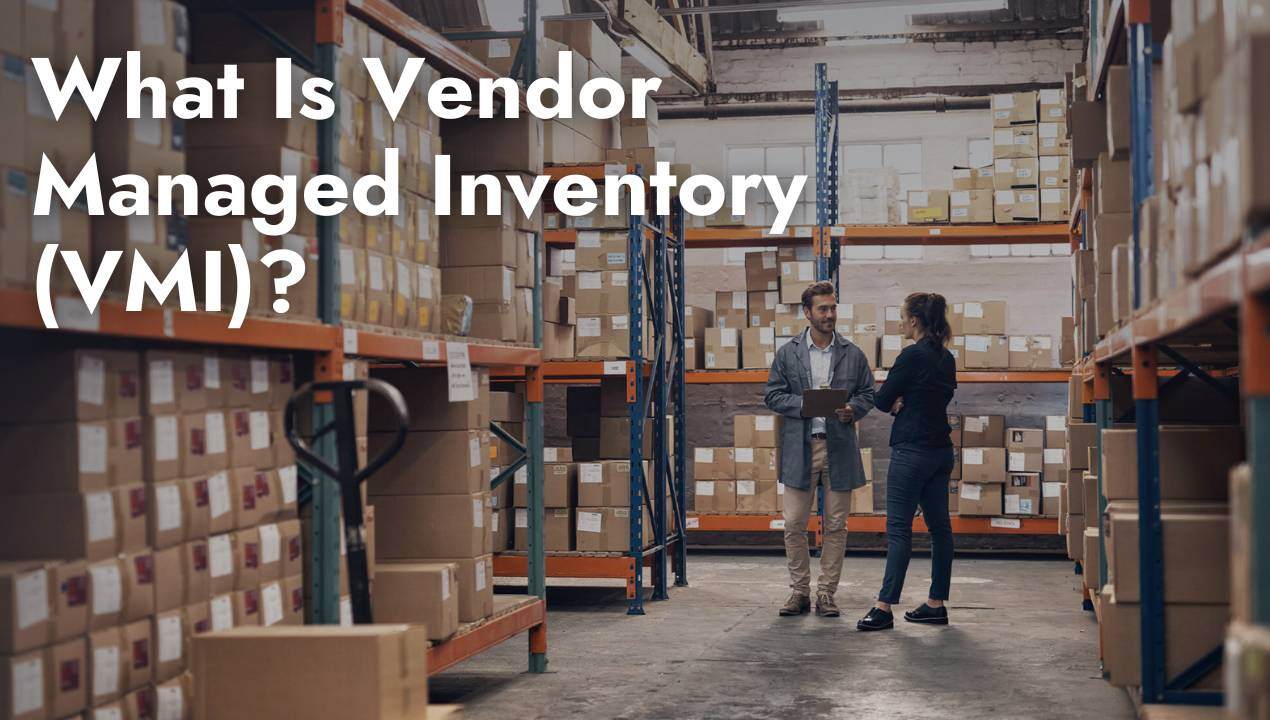Share this
What Is Lot Tracking for Ecommerce Retailers?
by Christie McLeod on Sep. 20, 2022

For ecommerce order fulfillment, accurate inventory management is an absolute necessity. As your business grows, so does your product range, order volumes, and the number of customers. This requires a system that not only helps you keep track of your inventory but also enables you to trace the path of each product from the manufacturer to the customer. One such system is lot tracking.
This detailed guide discusses the details of lot tracking for ecommerce. It will address questions like what lot tracking and control are, what items typically carry lot numbers, and the difference between lot tracking and serial tracking. It also explores the differences between lot numbers and stock-keeping units (SKUs), the two types of lot tracking, and products that mandate lot tracking.
Whether you’re a pro or a beginner in ecommerce, this guide provides a comprehensive resource for your understanding of lot tracking.
Let’s dive into it.
What is lot tracking?
Lot tracking is an essential tool in ecommerce inventory management, particularly in industries that manufacture or distribute products in large volumes. Lot tracking is the practice of assigning unique identifiers, known as lot numbers, to batches or groups of items that share similar production characteristics. For instance, they may have been manufactured or shipped on the same date, or they may share a similar attribute, such as size or color.
This approach allows for easy management and control over the items within the lot, as well as easy tracking of their location. Lot tracking keeps track of goods from purchase to its sale or return using lot numbers. It provides a mechanism to track products from their origin in the production process through distribution to end consumers. This enhances traceability and helps to ensure product quality and safety.
The most common type of lot tracking is based on serial numbers, though some advanced systems use barcodes or RFID tags. These technology-based methods offer automated, real-time tracking capabilities, leading to even greater accuracy and efficiency in managing inventory. Lot numbers are usually located in the top right-hand corner of any product’s packaging.
- Creation and Assignment: A unique lot number is assigned when a batch of products is produced, or a shipment is received.
- Record Keeping: The lot number, production date, expiry date, and any other batch-specific data are recorded in an inventory management system.
- Tracking: The lot number allows the company to track the batch’s location and status at any stage of the supply chain.
- Traceability: If an issue arises, such as a product recall or quality concern, the lot number allows the company to trace back the problem to its source quickly. Specific batch tracking can determine when and where the batch was produced or who bought items from that batch.
- Analysis: Lot tracking also provides valuable data for analyzing product performance, identifying patterns in defects, and planning future production.
What is lot control?
Lot control is a vital part of managing inventory, especially during the shipping process. It helps keep track of products from the moment they leave the warehouse until they’re delivered to their destination.
Lot control is a vital part of logistics management and ensures that goods are moved from one place to another in a safe and efficient manner. Lot control can include any or all of the following:
- Inspecting goods for damage, quality, and condition before loading.
- Recording the weight and dimensions of each shipment with a scale.
- Tracking shipments by using barcodes or RFID tags.
- Checking for compliance with government regulations.
- Inspecting shipments at customs.
Lot tracking vs. Serial tracking: what’s the difference?
Lot tracking and serial tracking have different purposes in inventory management.
Lot numbers, or batch numbers, are used to identify a particular batch, while serial numbers identify individual items inside that batch.
Lot tracking is a process that tracks the movement of large batches of goods, while serial tracking is an approach to inventory management that involves keeping track of individual units.
Lot trackers are used for managing items that are in stock, while serial trackers are used for managing items that need to be tracked as they move through the supply chain from raw materials to finished goods.
Lot tracking can be more cost-effective than serial tracking, as it has lower overhead costs and is less labor-intensive.
Lot numbers vs. Stock keeping units (SKUs): what’s the difference?
Lot numbers are not the only identifiers used for tracking and traceability purposes — there are stock-keeping units, too. While they perform similar functions, they are not the same. Lot numbers are different from stock keeping units (SKUs), and here is how:
Lot numbers are used for products in manufacturing, while SKUs are used for retail items.
A lot number is a number assigned to a batch of goods that have been manufactured by the same manufacturer. An SKU is a unique identifier given to an individual item in inventory.
Lot numbers are used to track the production of each batch and identify any problems with the goods. While SKUs are typically assigned by the store when it’s put on the shelves, and it may include information such as size, color, style, or brand name.
What are the two types of lot tracking?
Manual tracking
This type of lot tracking is done manually by the company’s employees or a third-party company that they hire to keep track of their inventory on a daily basis. In this type, all data, such as production and shipping dates, cost, etc., are taken care of by them.
Automatic Tracking
This type of lot tracking uses sensors that can sense movement and location. This automatically updates the inventory management system about where the merchandise is located at any given time.
Lot tracking can be implemented in two ways:
- Tracking forward: Look ahead and follow the inbound ingredients through the manufacturing process to the finished product.
- Tracking backward: You can trace back from the lot number of a finished product to discover the specific ingredients, quantities, and lot numbers that went into making that product.
Which products require lot tracking?
Identifying batches of products is a critical process in industries that mass-produce goods. The primary reason for this is quality control. When a product defect or issue is discovered, knowing its batch origin allows a company to isolate the problem.
This eliminates the need to recall or go through the entire product range. This batch-specific approach ensures that only the products from the identified batch are handled, which reduces operational losses.
Having a lot code can help you streamline your inventory and storage. You can easily assign the same number to a group of related products and store them together for easy identification. Retailers, manufacturers, and distributors use lot tracking to identify products that are part of a particular order or shipment.
The FDA and similar regulatory bodies require some retailers to track their lots for various reasons.
These requirements vary depending on the type of product and the risk level associated with it. Lot tracking and lot management are crucial for companies selling:
Medical supplies
Medical supply companies need to keep track of the inventory they have on hand. This inventory is essential for medical product fulfillment, distribution, and customer service. Keeping a record of where those supplies are in your warehouse will help you make sure that you have everything you need. Lot tracking also helps track of expiration dates.
Food and beverages
In order to maintain food safety and prevent waste, companies are mandated to use lot tracking systems to track their inventory. This system keeps track of which products are on the shelves and how many there are. It can also help reduce errors in the supply chain.
Chemical-based products
With the use of chemicals in manufacturing, there is a need for companies to track how much raw material is left over. Lot tracking allows them to know when it’s time to reorder and prevent shortages. This process also helps retailers avoid receiving too much stock or having inventory that won’t sell.
Fireworks
Fireworks are arguably the most dangerous consumer product on the market. They are often responsible for a significant number of injuries and fatalities. Fireworks manufacturers are required to maintain diligent records not only during shipping but also during manufacturing to be able to detect who has what and to keep your firework safety zones clear of waste materials.
Electronic devices
Most companies know that damaging goods during shipping can be very costly. If a device is dropped, it could lead to broken screens, bent frames, and other critical damage. Lot tracking and lot control reduce the chances of this occurring.
Cosmetics
It is important to track every step of the skincare and cosmetic fulfillment process from beginning to end. The use of lot tracking can help ensure that all products are made in a sterile and controlled environment, which reduces the chance of contamination. Lot control during transit further ensures that items are securely packaged and safe from hazards.
Quality assurance
Quality assurance is a critical part of manufacturing and shipping. As a result, companies typically must ensure that each batch of products meets their standards by tracking how many of the items have been delivered to the customer. If a lot is not delivered or goes missing, then it can be traced back to the error and rectify it.
Legal regulations
There are two types of lot tracking standards: local and state. Local standards may apply to any industry, but state-level standards are more typically found in the construction industry. It is important for a company to be aware of these varying lot tracking regulations to keep on track and avoid any potential fines or legal penalties.
Recalls
Recalls can be difficult to manage, especially when you have a large number of products that are sold in different stores. If you use lot numbers, you can easily identify which products were affected by the recall and remove them from your shelves.
What are the benefits of lot tracking?
Now that you know the basics of lot tracking and how crucial it is for ecommerce inventory management, it’s important to also learn all of the benefits of implementing lot tracking and what best practices are when it comes to these processes. Read our guide on the benefits of and best practices in lot tracking to round out your knowledge of this inventory management tool.
Lot tracking with an ecommerce fulfillment service
Lot tracking is vital for certain ecommerce industries. However, implementing lot tracking yourself can be challenging and time-consuming. A third-party logistics (3PL) partner can handle implementing and maintaining lot tracking for all of your products for you, along with any other inventory management or order fulfillment issue you might face.
At Shipfusion, we specialize in providing comprehensive logistics solutions, including lot tracking. Our dedicated account managers understand that different products have different needs and will work with you to figure out the best option for your business.
If you’re ready to learn more about finding a solution that optimizes your order fulfillment, book an appointment to speak with a Shipfusion fulfillment specialist today.
Share this
You May Also Like
These Related Articles

Comparing the Pros and Cons of Vendor Managed Inventory

What Is the Multi Echelon Inventory Optimization (MEIO) Strategy?

The Ultimate Guide to EDI for Ecommerce
- June 2025 (22)
- May 2025 (27)
- April 2025 (27)
- March 2025 (26)
- February 2025 (26)
- January 2025 (35)
- December 2024 (16)
- November 2024 (22)
- October 2024 (22)
- September 2024 (27)
- August 2024 (9)
- July 2024 (8)
- June 2024 (5)
- May 2024 (8)
- April 2024 (8)
- March 2024 (6)
- February 2024 (6)
- January 2024 (5)
- December 2023 (3)
- November 2023 (3)
- October 2023 (5)
- September 2023 (4)
- August 2023 (2)
- July 2023 (1)
- June 2023 (4)
- March 2023 (2)
- October 2022 (1)
- September 2022 (5)
- August 2022 (4)
- July 2022 (7)
- June 2022 (4)
- May 2022 (4)
- April 2022 (6)
- March 2022 (2)
- February 2022 (1)
- January 2022 (3)
- December 2021 (2)
- November 2021 (4)
- October 2021 (2)
- September 2021 (5)
- August 2021 (4)
- July 2021 (4)
- June 2021 (3)
- May 2021 (2)
- April 2021 (3)
- March 2021 (3)
- February 2021 (3)
- January 2021 (2)
- December 2020 (4)
- November 2020 (2)
- October 2020 (4)
- September 2020 (2)
- July 2020 (5)
- June 2020 (4)
- May 2020 (2)
- April 2020 (2)
- March 2020 (4)
- February 2020 (1)
- December 2019 (1)
- May 2018 (1)
- March 2018 (2)
- February 2018 (3)
- January 2018 (3)
- November 2017 (3)
- July 2017 (4)
- March 2017 (3)
- February 2017 (5)
- January 2017 (3)
- December 2016 (4)
- November 2016 (6)
- October 2016 (6)
- October 2015 (1)
- September 2015 (1)
- June 2015 (3)
- May 2015 (3)
- August 2014 (1)
- July 2014 (1)
- March 2014 (1)
- February 2014 (1)